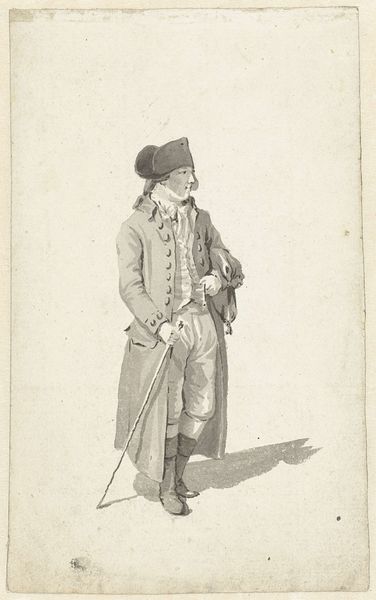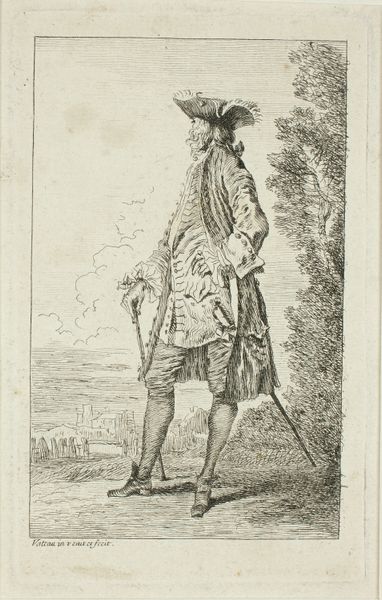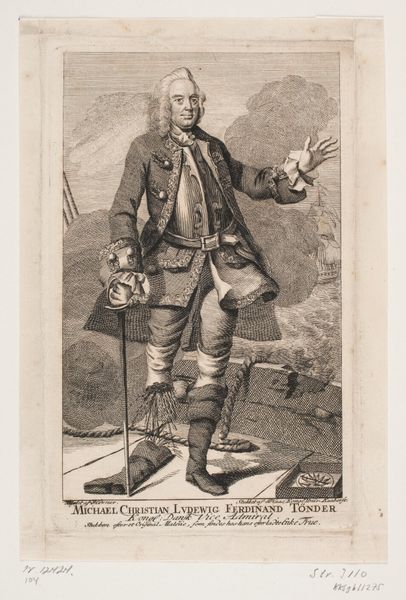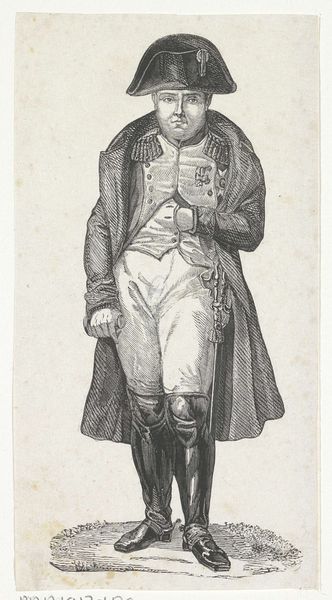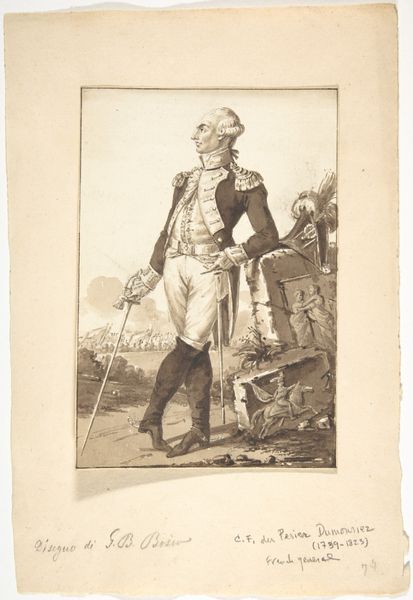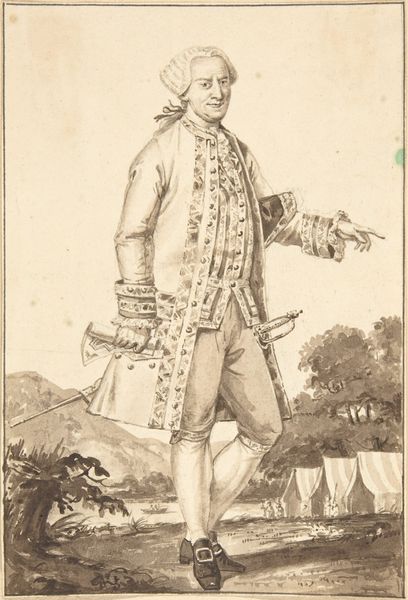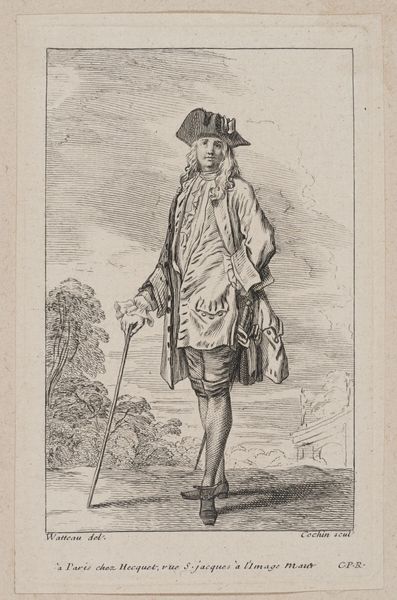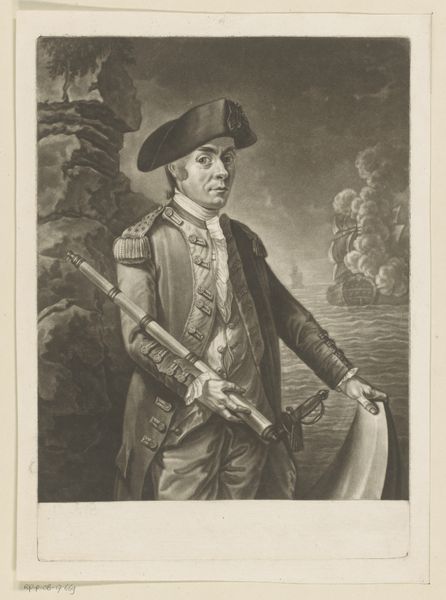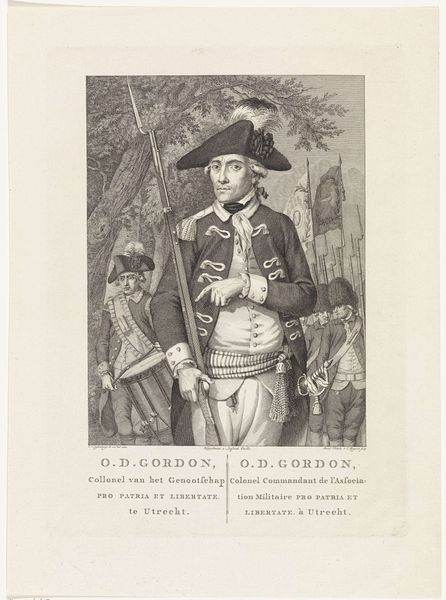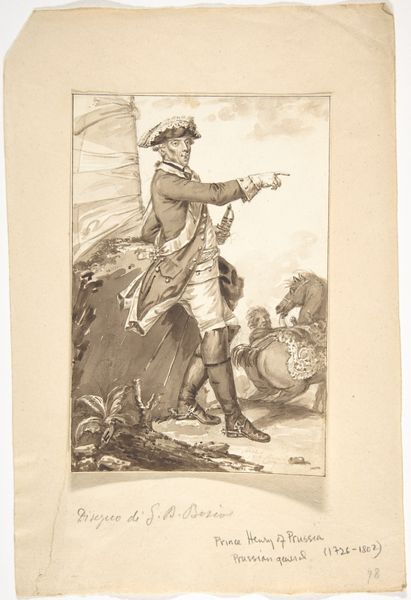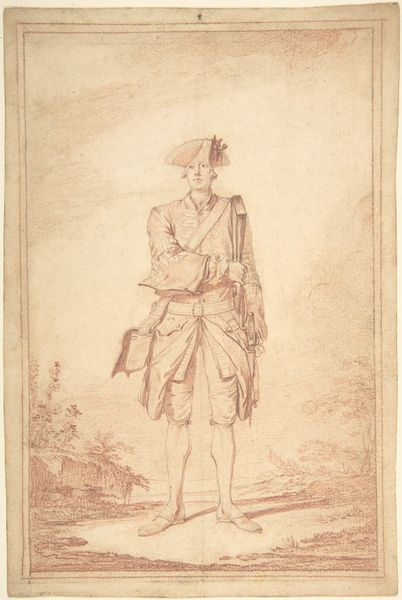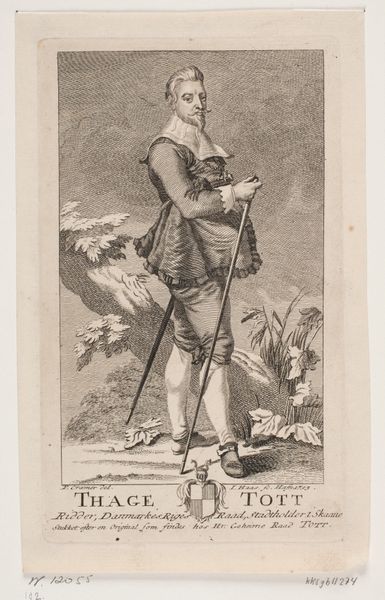
print, engraving
#
portrait
#
neoclacissism
#
aged paper
# print
#
old engraving style
#
genre-painting
#
history-painting
#
academic-art
#
engraving
Dimensions: height 122 mm, width 70 mm
Copyright: Rijks Museum: Open Domain
This is a portrait of Jozef II, German Emperor, made by Johann Carl Schleich in 1783 using the technique of etching. The stark contrast of light and shadow in this print stems directly from the etching process. Lines are bitten into a metal plate with acid, and the depth of these lines determines how much ink they hold, and therefore how dark they appear on the page. This allowed Schleich to create fine details and textures, particularly noticeable in the Emperor's garments and facial features. The medium lends itself to a kind of mass production, and prints like this one were often disseminated widely, helping to construct and reinforce the image of powerful figures like Jozef II. Consider the labor involved: from the engraver's skilled hand to the printing press churning out copies. These processes speak volumes about the era's social dynamics and the rise of visual media. The print straddles the line between craft and industry, high art and propaganda. It invites us to consider how images shape our understanding of power and history.
Comments
No comments
Be the first to comment and join the conversation on the ultimate creative platform.

